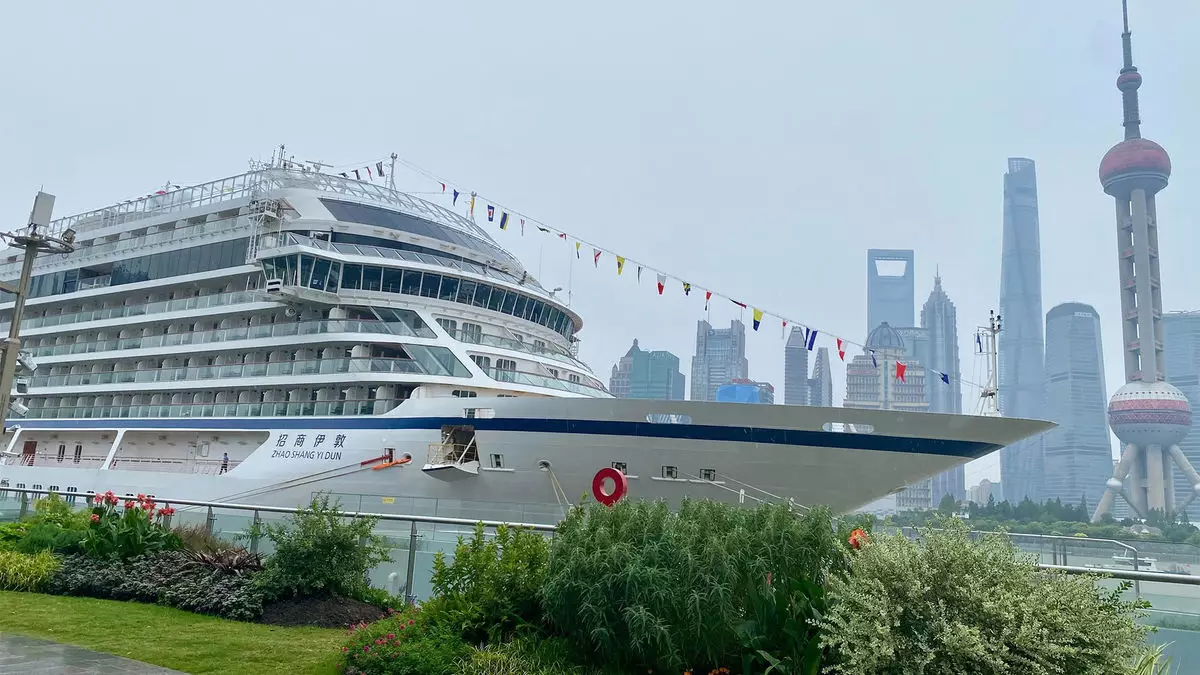In a groundbreaking move for the cruise industry, Viking has set sail on a new chapter by launching ocean cruises specifically designed for English-speaking travelers in China. After a lengthy hiatus marked by the pandemic, Viking’s return with their ship Zhao Shang Yi Dun marks not just a resumption of services but also an experiment in blending Western cruise culture with Chinese consumer preferences. This bold venture endeavors to cater to international travelers while simultaneously embracing local tastes in a region that holds tremendous potential for growth in the tourism sector.
A New Era for Asian Cruises
The Viking Yi Dun commenced its inaugural voyage in mid-September, traversing a splendid 10-day journey that includes stops at noteworthy ports like Shanghai, Shenzhen (Hong Kong), Zhoushan, Dongtou, Pingtan Island, and Xiamen. By capitalizing on unique access to various Chinese destinations that previously saw limited cruise traffic, the Yi Dun offers travelers a fresh itinerary. The ship, a product of a joint venture between Viking and the state-owned China Merchants Group, has undergone rebranding and reflagging to facilitate a more extensive range of port visits beyond the more conventional stops.
This innovative approach is particularly vital when considering the broader marketing landscape. In the wake of a sluggish recovery in inbound tourism post-pandemic, Viking’s strategy not only introduces an avenue for Western tourists to experience China but also taps into a re-emerging domestic tourism market. With voyages scheduled to resume for both international and local audiences, Viking is strategically aligned to navigate this complex market.
Balancing Diverse Culinary Experiences
One notable characteristic of the Yi Dun is its culinary offerings. The ship embraces traditional Chinese cuisine while maintaining options familiar to Western travelers. Food stations feature a fusion of flavors, as exemplified by a dessert station flaunting sweet coconut milk accompanied by a variety of complementary ingredients. This culinary diversity invites guests to dip into local flavors while catering to the palates of English-speaking passengers through a careful adjustment of menus and dining options.
The thoughtful incorporation of both Chinese and Western fare is not merely an aesthetic choice but a necessity. Mike Estill, COO of the Western Association of Travel Agencies, highlights the complications involved in merging the distinctly different appetites of American and Chinese consumers. The Yi Dun distinguishes itself by skipping the usual onboard casinos favored in many Chinese cruises, focusing instead on leisure pursuits that would appeal to a broader audience.
Despite the ship’s modern amenities and thoughtful offerings, the language barrier remains a prominent challenge. While most of the crew members are Chinese and have undergone training to converse in English, their ability to communicate with guests fluctuated, particularly during complex interactions such as detailed orders at dining venues. This often hindered the guest experience, revealing a gap that Viking may need to address to enhance overall passenger satisfaction.
The onboard atmosphere is a reflection of Nordic elegance intertwined with Chinese design elements. From intricate wall projections of Chinese art to sections dedicated to local cultural experiences, the Yi Dun creates a visually captivating environment. However, the complexity of communication, particularly during excursions, indicates there are areas requiring further refinement to solidify an effortless travel experience for foreign guests.
Viking’s chairman and CEO, Torstein Hagen, acknowledges that the success of this venture will take time to materialize. With 2023 marking a notable moment as China reopens its borders, the current level of inbound tourism still lingers below 2019 figures, suggesting a cautious approach is essential in tapping into this revived market. As the demand for travel in Asia rebounds, Viking’s simultaneous targeting of both Western travelers and local tourists demonstrates a proficient long-term strategy poised for growth.
In summation, Viking’s Yi Dun represents a fresh perspective on cruising in a country rich with cultural heritage and scenic beauty. By integrating varied travel preferences and cautiously navigating the complexities of this dual-market strategy, Viking may not only redefine cruise travel in China but also set an industry benchmark for balancing diverse traveler needs. As the operations further unfold, the potential for Viking’s cruise initiative in China remains a captivating narrative worth watching closely.

